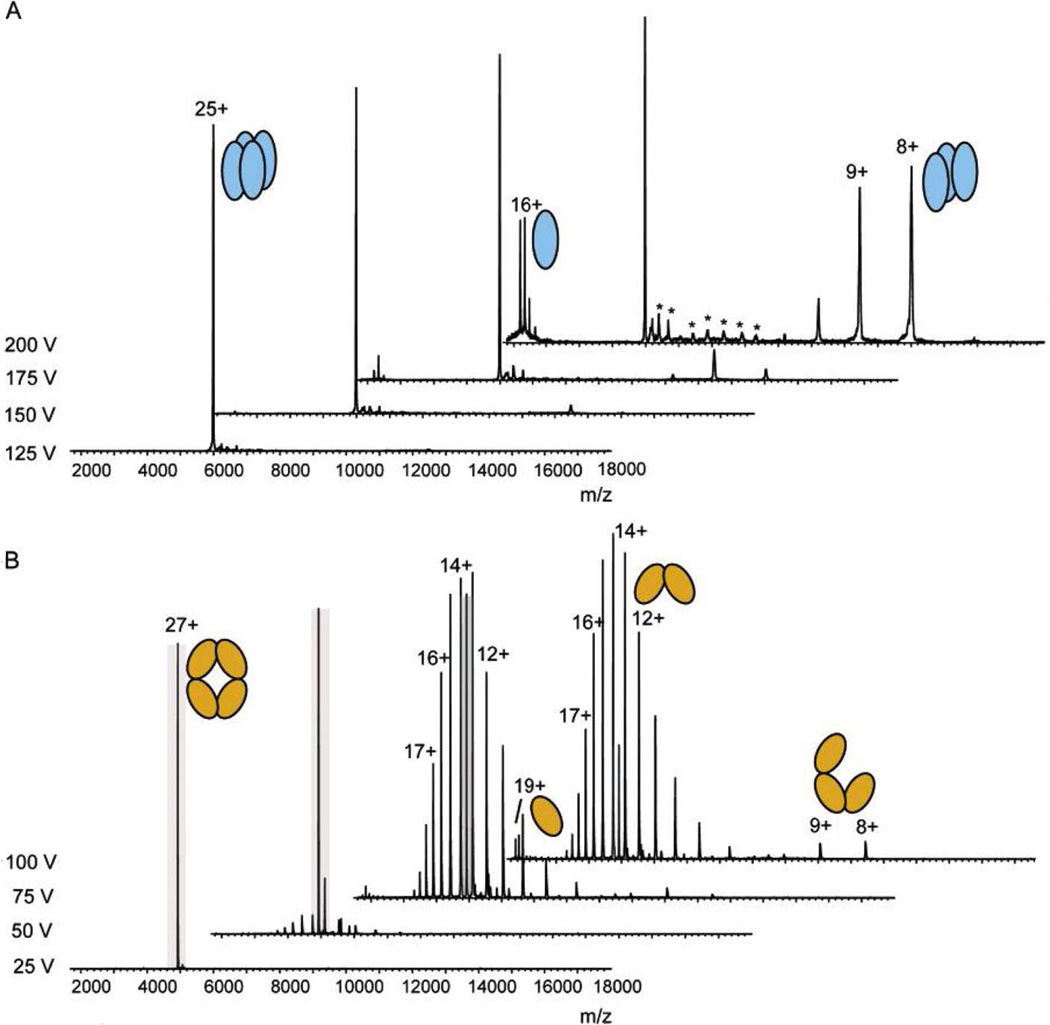Figure 6.
Tetrameric 2-keto-3-deoxyarabinonate, a complex with limited inter-subunit contacts, cleaves symmetrically at only 50 V, while functionally-related arabinose dehydrogenase, a tetramer with extensive contacts, dissociates at higher voltages and yields asymmetric product distributions. (A) Tandem mass spectra of arabinose dehydrogenase at acceleration voltages ranging from 50 to 200 V after selection of the 25+ ion of the tetrameric species. (B) Tandem mass spectra of 2-keto-3-deoxyarabinonate dehydratase at acceleration voltages ranging from 10 to 100 V after selection of the 27+ ion of the tetrameric species. The gray column indicates the precursor ion of 2-keto-3-deoxyarabinonate dehydratase. At high collision energies, some covalent fragmentation reactions took place. The stars indicate these fragments. (Reprinted with permission from Van den Heuvel, et al., Anal. Chem. 78, 7473–7483 (2006), copyright 2006 American Chemical Society.)

